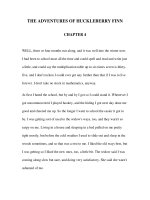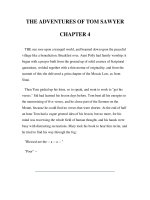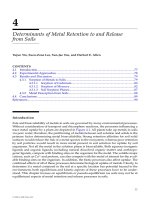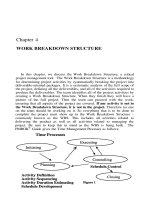Lecture Management of retail buying – Chapter 4: Merchandise assortments
Bạn đang xem bản rút gọn của tài liệu. Xem và tải ngay bản đầy đủ của tài liệu tại đây (165.96 KB, 5 trang )
Ch. 4: Merchandise Assortments
• The different types of brand identification, their
potential benefits & challenges
• The importance of privatelabel merchandise in
today’s marketplace
• Theories about the optimum breadth & depth of
assortments
• How demand and selection factors, seasons & (in
apparel) size, fashion, & fit all work to influence
assortment & buying patterns
• Setting policies about assortments for buyers to work
from
Copyright © 2006 by John Wiley & Sons, Inc. All rights rese
PrivateLabel Brands
PROS CONS
•
•
•
•
•
•
•
•
More variety for consumers
Specialty and ethnic item
availability
Cost advantages
Increased customer loyalty
Better profit margin for
retailers
Positive store image for
“specially selected” items
Increased shelf space for
some manufacturers
Good alternative to pricey
“name brands” for smaller
retailers
•
•
•
•
•
Store image issues may
backfire with consumers:
secondrate, “offbrand”
items
Less financial support from
competitive manufacturers
Greater difficulty ensuring
quality, product consistency
Strained relationships with
manufacturers’ other
retailers
Lower profit margins for
manufacturers
Copyright © 2006 by John Wiley & Sons, Inc. All rights rese
Assortment Planning: Terms to Know
• Breadth and depth (“wide and shallow,” “deep and
narrow”)
• Model stock
• Balanced assortment
• Pulling power
• Net marginal productivity
• Dominant (or “competent”) assortment
• Demand rigidity
• Classification
• Classification controls
• Product life cycle
Copyright © 2006 by John Wiley & Sons, Inc. All rights rese
Demand Rigidity Factors
• The product’s primary or intended use.
• Secondary considerations – “Wants” that, if
necessary, may be substituted.
• Purchase habits typical of this type of product
– Is it a convenience or a necessity?
• Price lines – Both highend and bargain
prices are considerations here.
• Urgency – How soon is it needed? This
determines how selective the shopper can be.
Copyright © 2006 by John Wiley & Sons, Inc. All rights rese
Setting Assortment Policy
• The nature of merchandise carried in the
store
• Characteristics of the trading area
• Community needs and special attributes that
might meet them
• Comparisons to competitors
• A price line that fits the target customers
• Availability of capital
• Realistic view of merchant’s capabilities
Copyright © 2006 by John Wiley & Sons, Inc. All rights rese









